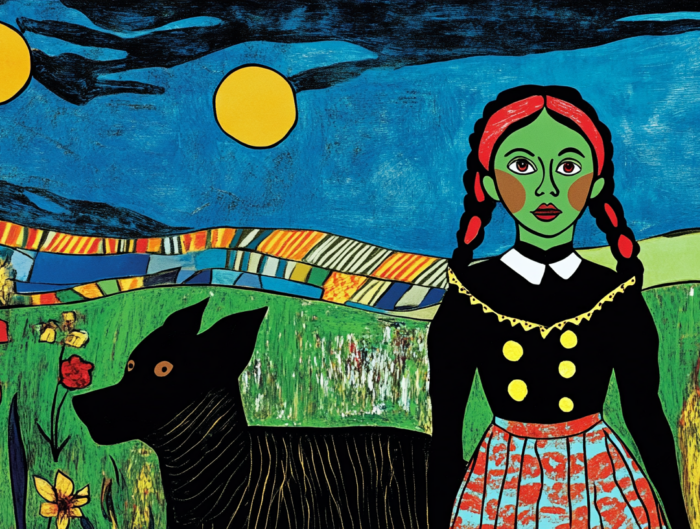By Ken Anderson
Red Ogre Review Books & Liquid Raven Media, 2024, Los Angeles
79 pages, $9.99
Through a mix of ballads, freeform, narrative poems, and rhyme, this modern retelling of nursery rhymes fuses salient themes of the twenty-first century, such as trauma awareness and gender politics, with the cautionary tales of old. This effectively leaves the reader wondering Who wrote the social norms? and is seen through the exploration of infidelity in The Tale of Faith MacRae, the consequences of slothfulness in The Crone and the Girl, and of misbehavior through this excerpt from “Jerry Hall”:
When I was a little boy,
I was a very little boy—in fact, an elf,
and Mother called me Hob. When I was a devil, she set me
on a shelf
with a jar
of dill. When I was an angel, she fed me cake
with a spot
of breakfast tea.
With its underlying theme of contrasts threaded throughout, Anderson’s collection is rife with these juxtapositions. While some tales, like ‘Snow in the Wildwood,’ offer a brilliant examination of contrasting perspectives, others are paired, such as ‘The Neighbor and the Old Crow,’ ‘The Ballad of Robert Brewster,’ and ‘The Tale of Faith MacRae.’ ‘My Three Sons’ portrays death as bleak, whereas ‘Under the Ice’ contrasts this by presenting it with the perfect balance of grace and mirth. The brilliant metaphors peppered the anthology further illustrate this running theme of contrasts, such as the tongue-in-cheek, genius metaphor “And I knew with such a merry yeast my loaf was sure to rise,” which vividly contrasts with “[they] were close as folded hands.” Likewise, the overt dark nature of many of the tales is further balanced with beautifully descriptive lines that keep the reader turning pages, such as this excerpt from Anderson’s version of ‘Mother Goose.’
I sweep the clouds
like cobwebs
from the sky
and dust the silver tassels
of the stars.
Fully embracing the patriarchal tone of the original, Anderson leans into this and adds a subtle tint of crass, faithful to the grit-lit style. ‘Jack,’ the author’s reinterpretation of Jack and Jill, and an excerpt from ‘The Black Sheep’ demonstrate this approach:
And the sheep were sheep
who’d dog me anywhere. You don’t need a chair and whip
for sheep.
As Anderson extends the theme of patriarchy and embraces the cautionary nature of the original nursery rhymes, readers will also note the presence of highly sexual undertones throughout the anthology. They are particularly evident in several tales, including this excerpt from “The Old Man and the Girl”:
She worked me up, but left me there,
alone, undone, and yearning
for her lips
so keen
I knew
I’d certainly do something bad.
An excerpt from “Dapple Gray” provides a further example. I let her spur me raw
as if I were all the common men
she could never reach
in time.
At face value, these excerpts are indeed about sex. However, on closer examination, the overall undertone of the anthology in its totality is less about sex than it is a bitter commentary on the current state of society. While simultaneously poking a finger into the steely chest of misogyny, Anderson also manages to tease out the poetry of this particular form of violence, seen in an excerpt from “The Old Man and the Doll”:
Someone had stunned her
with a stone, then picked the purple primrose
of her youth. He left her there
to sit and stare, her tongue dull
as a winter snake, hands folded
in her lap.
By offering these little nuggets of literary distraction and placing them strategically throughout, Anderson effectively engages the reader and, quite frankly, enrages them. Although the book includes an Index of Mother Goose Rhymes at the end, adding a more tangible and visual connection between the author’s version and the original would have enhanced these themes and further highlighted these nuances. This collection is definitely not safe for bedtime. Anderson’s words resonate with the reader for many reasons and on many levels. Ultimately, in facing the complexities of the twenty-first century, he sagely and gracefully reminds us:
Some say
we need a double stitch
for the suit
of age
to fit.
